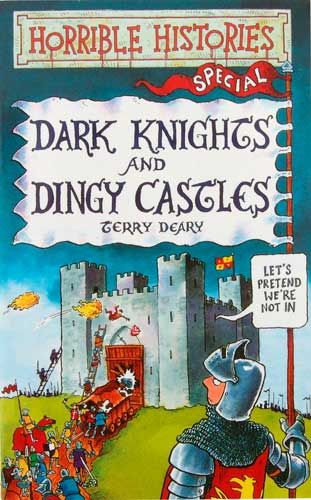
The Rotten Romans
Book Description
Prepare for a journey into a world of gory gladiators, vile emperors, and the stench of ancient Rome! In this thrilling adventure, history's dark side comes to life as young readers meet characters who navigate a city filled with treachery and outrageous punishments. Pile up your knowledge of Roman mischief as tales unfold, showcasing the bizarre customs and shocking realities of life in one of history’s most notorious empires. With each page, the tension heightens—what twisted fate awaits those who dare defy the rules of this rotten regime? Are you ready to discover the truth behind Rome's scandalous past?
Quick Book Summary
"The Rotten Romans," written by Terry Deary, is a delightfully gory and humorous exploration of Ancient Rome, tailored especially for middle-grade readers. Through wit and irreverence, Deary brings to life the weird, wild, and sometimes disgusting realities of daily life in the Roman Empire. From cruel emperors to crazy customs, bloody gladiator combats to inventive punishments, the book peels back the dignified image of ancient Rome to reveal its most scandalous and bizarre secrets. Along the way, readers encounter stories of rampant corruption, ingenious inventiveness, and the struggles of ordinary citizens. Deary’s entertaining approach makes learning about history fun and memorable, proving that what we think we know about Rome is often only part of the story.
Summary of Key Ideas
Table of Contents
Daily Life and Roman Society
"The Rotten Romans" opens a window onto the day-to-day lives of ancient Romans, demonstrating that life wasn’t all grandeur and glory. Ordinary Romans endured noisy neighborhoods, unreliable plumbing, and perilous streets. Children learned harsh lessons at home and school, often with corporal punishment. Social hierarchies were strict, and the lives of the poor and slaves were grueling, but even the rich faced strange traditions and expectations, such as the importance of public image and luxurious but sometimes bizarre feasts.
Bizarre and Brutal Roman Customs
The book revels in exposing the oddest and most brutal aspects of Roman customs. Readers learn of the infamous Roman baths, toilet habits that involved shared sponges, and outlandish superstitions. Weddings, funerals, and even meals were governed by strange rituals. Punishments for crimes could be excessively cruel—offenders might face being thrown to wild animals or being crucified, demonstrating the heights of Roman creativity when it came to discipline.
Emperors, Power, and Corruption
A major theme is the corrupt nature of Rome’s leadership. Deary introduces some of history’s most notorious emperors—Nero, Caligula, and Commodus—detailing their egomania, violence, and extravagance. Power struggles were often resolved by betrayal or assassination, and the whims of rulers could determine life or death for citizens. These stories highlight both the fragility and excess of Roman power structures, as everyday Romans lived under precarious rule.
Gladiators and Public Spectacle
Spectacle played a central role in Roman life, especially the gladiatorial games. Deary vividly describes the terrifying fates of gladiators—most were prisoners or slaves forced to fight to entertain the bloodthirsty public. Not all battles ended in death, but the games showcased Rome’s appetite for violence and its twisted sense of honor. The exciting, yet horrifying details of these spectacles illuminate the darker side of Roman "entertainment."
Inventiveness, Hygiene, and Rome’s Legacy
Despite all the rotten realities, the book also celebrates the resourcefulness and enduring impact of the Romans. From engineering feats like roads and aqueducts to urban hygiene solutions (though primitive by today’s standards), Romans left a mark still visible in the modern world. Their contrasts—inventiveness and brutality, glory and filth—are explored through lively anecdotes, making Roman history both intriguing and accessible to young readers.
Download This Summary
Get a free PDF of this summary instantly — no email required.





